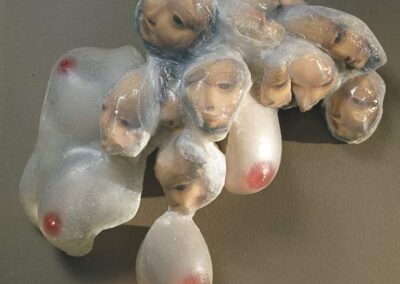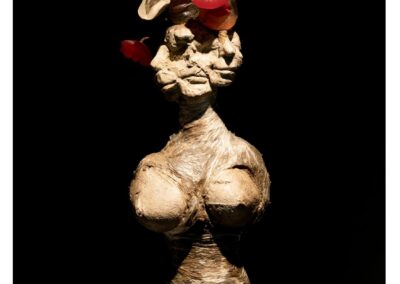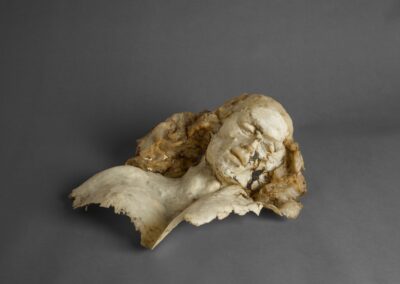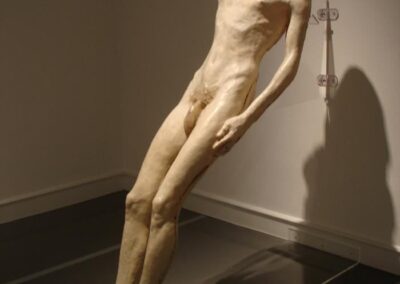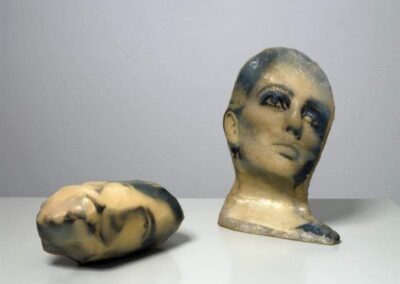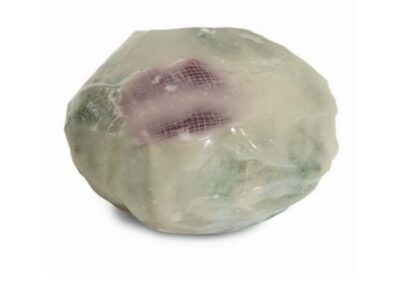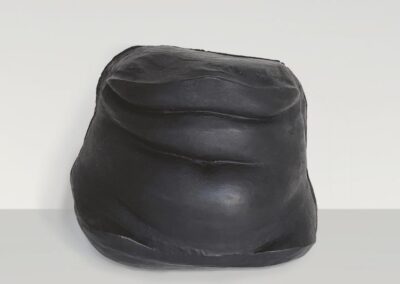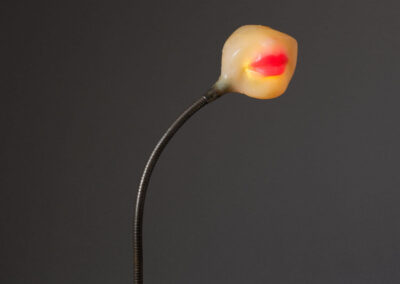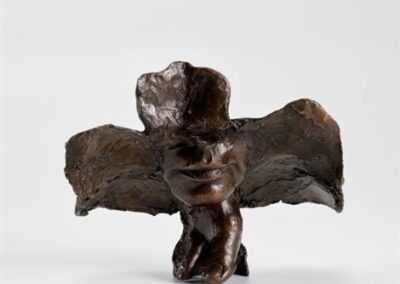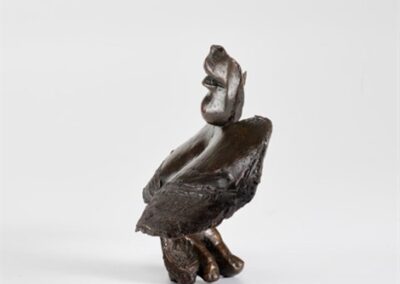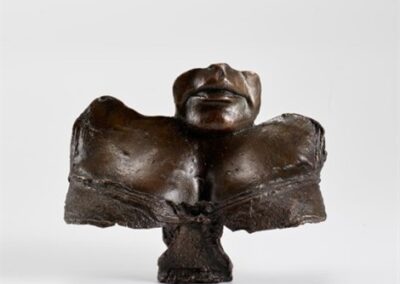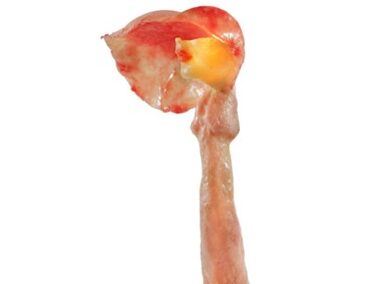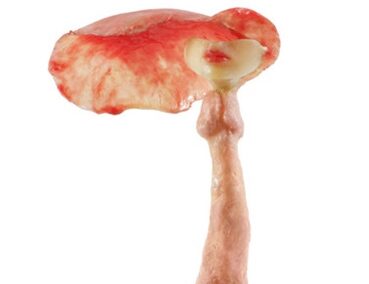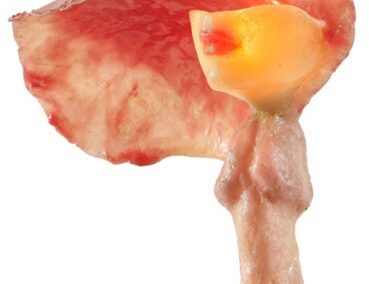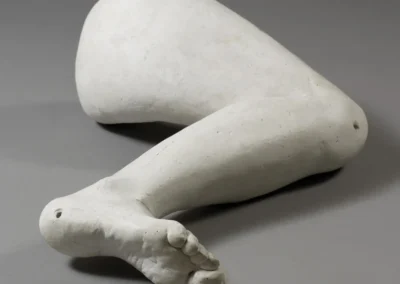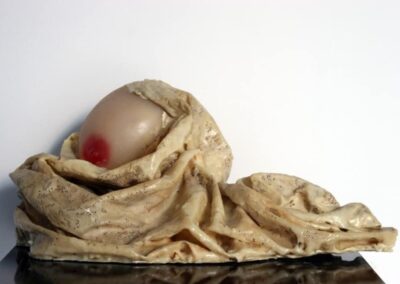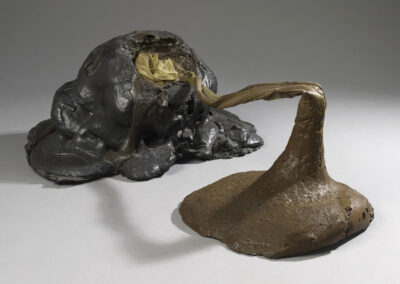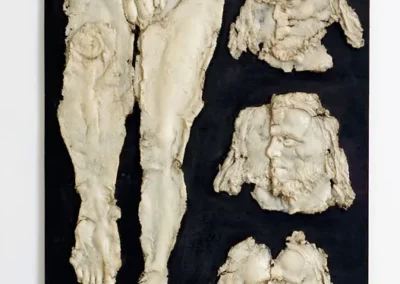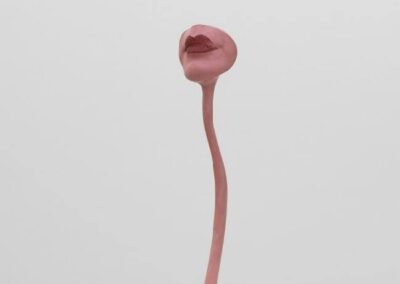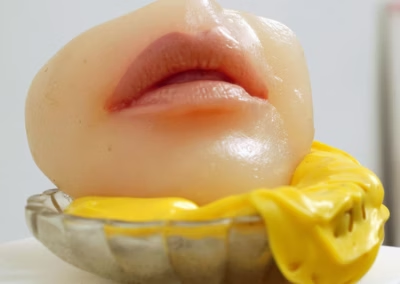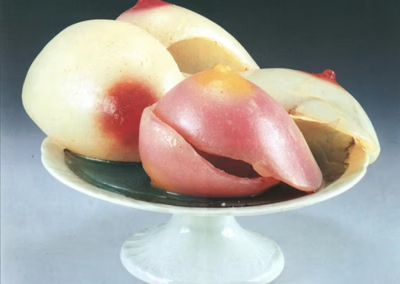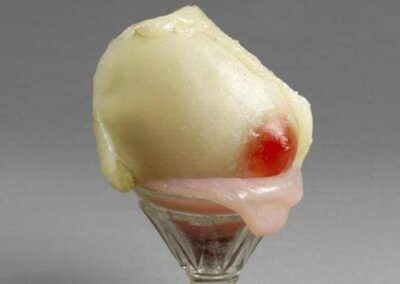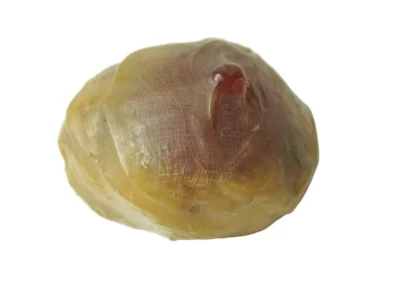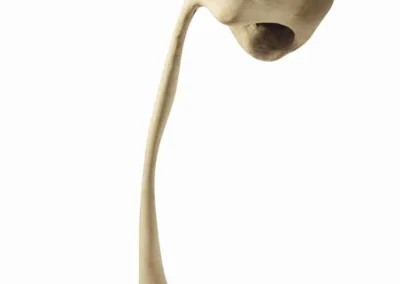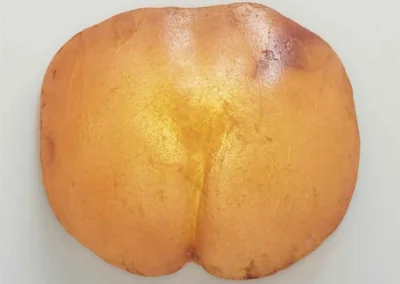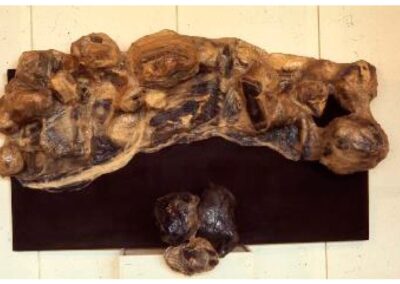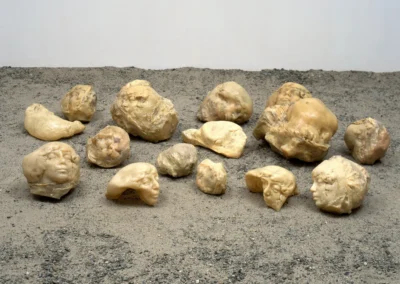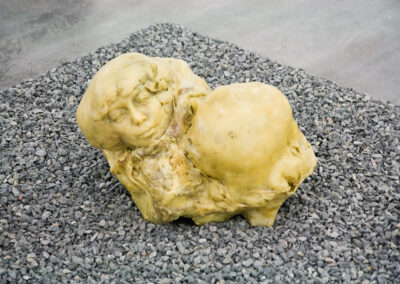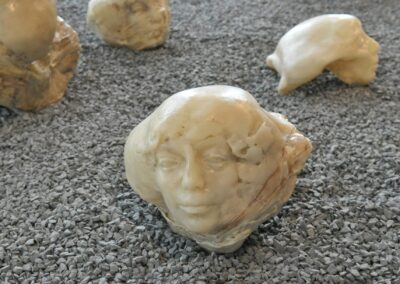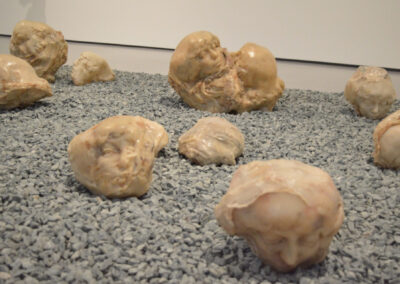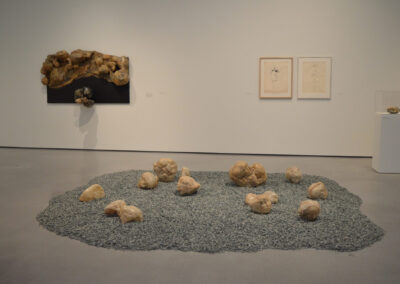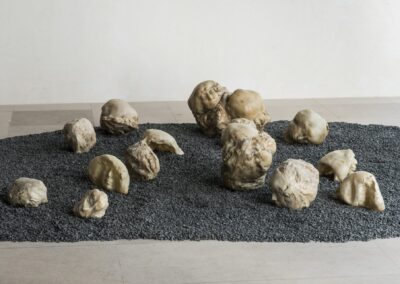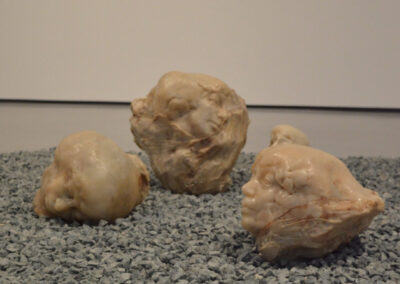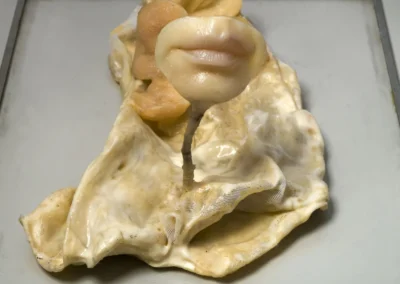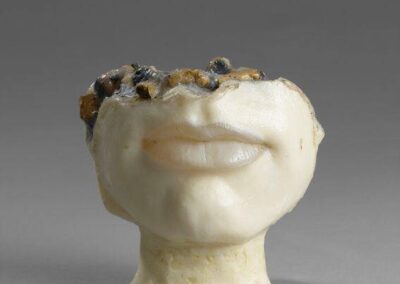The next Artist You Need To Know is Alina Szapocznikow (1926 – 1973).
She was a Polish artist primarily known for her sculptural artworks that were fragmented and corporeally unsettling interpretations of the human form. Surrealism, Nouveau Réalisme [New Realism] and Pop Art were all influences in terms of her work. Szapocznikow was a Holocaust survivor who became one of the most significant sculptors of the post WW II era (she is well known in Poland, but has only garnered wider recognition in the last few decades). She worked in traditional sculptural mediums but was also comfortable in more experimental and synthetic media.
From Ocula : Szapocznikow was “renowned for an oeuvre that renders visible the human body’s experiences of love, pleasure, pain, trauma, and inevitable decay.”
Her career only spanned a few decades but the power of her work has made it quite influential and still relevant to many contemporary artists. In 1972 (a year before her passing), Szapocznikow offered the following summation of her art and ideas : “I have been conquered by the hero-miracle of our age, the machine. To it belong beauty, revelations, testimonies, the recording of history. To it belong, in the end, truthful dreams and public demand. As for me, I produce awkward objects. This absurd and convulsive mania proves the existence of an unknown, secret gland, necessary for life.”
The nature of Szapocznikow’s artworks means that they are best appreciated through a more spatial experience, so we’ll be sharing images but also videos of her artworks, such as this one that made to accompany an exhibition of her work at Centre Pompidou.
Szapocznikow was born in 1926 in Kalisz, Poland, and she grew up in Pablanice, which is near Łódź, With the outbreak of World War II, she and her family were targeted for being Jewish and Szapocznikow survived imprisonment at three concentration camps (Auschwitz, Bergen-Belsen and Terezin). A 2017 exhibition of her work at Hepworth Wakefield offered the observation that these “experiences left her acutely aware of the fragility of the human body” which would become such a dominant aspect of her mature work.
Post WW II, she relocated to Prague where she began her studies in sculpture at the Academy of Art and Industry in Prague : Szapocznikow attended the École nationale supérieure des Beaux-Arts in Paris (she studied under Paul Niclausse). Until the early 1950s, Szapocznikow lived between Prague and Paris. During this time she was afflicted with peritoneal tuberculosis.
She would return to live and work in Poland, and a brief marriage to Polish art historian Ryszard Stanisławski lasted for six years, from 1952 to 1958. During her time under the Soviet regime in Poland, Szapocznikow exhibited her work in many sculptural competitions, finding some success despite the official government policy of Socialist Realism. From here : “In the 1950s, Szapocznikow’s star rose; she won numerous commissions to create monuments to the Holocaust and World War II, and was even filmed for French television by Polanski in her Warsaw studio in 1957.”
With the death of Stalin in 1953, and the so – called Krushchev Thaw (when there was a tacit loosening of censorship and some relief from oppression), Szapocznikow began to explore more avant – garde work. It was at this time that her aesthetic centred on the body – specifically her own, in both very corporeal and unsettling works – truly began. Lips, breasts, legs and other ‘dismembered’ female body parts became recurring motifs in her assemblages.
Her influences during this formative period included Jean Arp, Henry Moore, and Alberto Giacometti.
Szapocznikow garnered more attention for this innovative body centred work, and in 1962 was an exhibitor at the Venice Biennale. She would relocate to Paris in 1963 : while there, she met Pierre Restany who introduced her to more contemporary sculptural techniques, such as polymers and plastics. A significant arts journalist of his time, he championed Szapocznikow’s artwork often.
In Paris, Szapocznikow’s artistic circle included Christian Boltanski and previously featured Artist You Need To Know Annette Messager, “as well as members of the determinedly Dionysian art collective Panique (with which her second husband, graphic designer Roman Cieślewicz, was associated). Established in 1962, this late-Surrealist circle of eccentrics included poet Fernando Arrabal, filmmaker Alejandro Jodorowsky, and artist and writer Roland Topor. The anarchic spirit of the Panique antimovement went decidedly against the main currents of contemporary art discourse in France at the time.” (from ARTFORUM)
Szapocznikow was stricken with breast cancer in 1968 : in her final years and works, she once again mined her own experience (as she did with her time in the concentration camps) to create a number of works that many art historians refer to as her ‘tumour’ sculptures. From here : “That same year Szapocznikow started making her “tumor” sculptures using resin, gauze, crumpled newspapers and photographs. Through casts of the human body, the artist intended to preserve the impermanence of the body as a source of pain, trauma and truth. Her choice of using photographs of herself and of friends in forms of synthetic resin calls upon the processes of sculpture and photography as grave diggers and carriers of melancholy.”
She passed away in 1973 in Praz-Coutant in France, succumbing to the aforementioned cancer.
Alina Szapocznikow’s artworks can be found in the Museum of Modern Art in Warsaw, the Museum of Contemporary Art in Kraków (MOCAK), and the Museum of Modern Art (MoMA), among many others. A comprehensive listing of her solo and group exhibitions can be seen here.
A fine in depth article about her life and work from ARTFORUM can be read here. A video of her posthumous retrospective at Hepforth Wakefield can be seen here and a similar exhibition tour from a showing of her work at Hauser & Worth in New York City can be enjoyed here.

